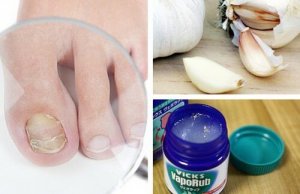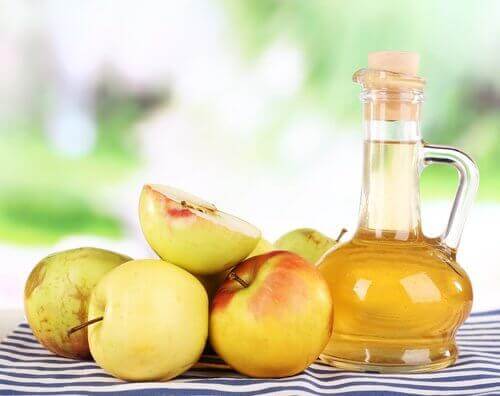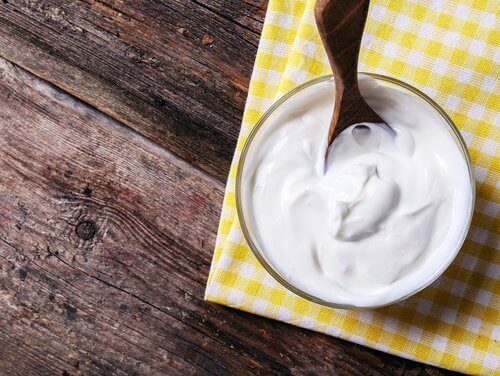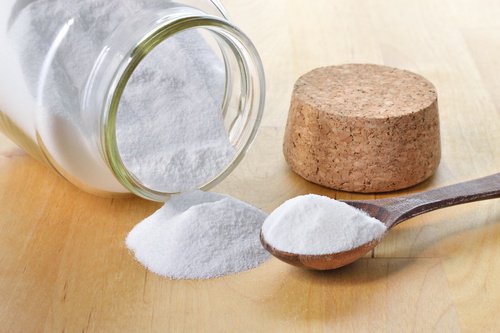7 Nail Fungus Home Remedies


Written and verified by the doctor Nelton Abdon Ramos Rojas
Fungal infections can cause discoloration, peeling, and weakening of the nail. They are a common aesthetic problem that people want to treat and get rid of as soon as possible. To do that, individuals suffering from fungal infections in their nails often turn to home remedies.
Vinegar, lemon juice, and garlic are some of the most popular home remedies for this particular ailment. But do these remedies actually work, or could they actually be harmful to your health?
Home remedies for nail fungus
Let’s sort through what is true and what is a myth about these popular home remedies.
1. Apple cider vinegar

- Myth: the acid in apple cider vinegar is an active compound that helps eradicate fungus in fingernails as well as toenails. Its alkaline properties regulate your skin’s pH and alter the conditions that the fungus needs to propagate.
- Reality: apple cider vinegar can’t get rid of an infection.
2. Garlic
- Myth: Crushing a clove of garlic and applying it to your nail will get rid of the infection because garlic has antibiotic properties.
- Reality: garlic paste doesn’t get rid of the infection, nor does it protect you from future infections.
3. Plain yogurt

- Myth: Applying yogurt on your nail can get rid of the fungal infection.
- Reality: Eating yogurt as part of a balanced diet can be good for your health, but it’s useless as a topical remedy.
4. Tea tree oil
- Myth: pure, undiluted tea tree oil is a natural antiseptic, capable of eliminating all kinds of microorganisms.
- Reality: the topical use of tea tree oil at 10% concentration can be just as effective as tolnaftate (an anti-fungal agent) to treat athletes foot. In concentrations of 25-50% it could be enough to cure infections. That being said, it’s important to use caution.
5. Vicks VapoRub
- Myth: applying Vicks VapoRub on your nail will get rid of the infection.
- Reality: there is no scientific evidence to support the use of this product to treat fungal infections.
6. Baking soda

- Myth: because baking soda is alkaline, it can treat the fungus and other microorganisms that affect the health of your nails.
- Reality: Not only can baking soda can be too abrasive for your skin, but it doesn’t have any antifungal properties.
See also: 6 weird uses for baking soda
7. Lemon juice
- Myth: lemon has antimicrobial properties that kill the infection at the source.
- Reality: lemon juice won’t cure your infection. On the contrary, it could actually make it worse. It can also cause other problems like irritation, swelling, etc.
The best remedy is the one your doctor prescribes and will vary depending on what kind of infection you have. Home remedies aren’t a valid option.
So what can you do to heal and prevent fungal infections?
If you have a fungal infection on your fingernails or toenails, see your doctor, and follow their instructions.
It’s also important to follow some basic guidelines for good hygiene. Always dry your hands and feet thoroughly after you shower and avoid baths. If you spend a lot of time in the water, you could make your problem worse.
All cited sources were thoroughly reviewed by our team to ensure their quality, reliability, currency, and validity. The bibliography of this article was considered reliable and of academic or scientific accuracy.
- Piraccini BM, Alessandrini A. Onychomycosis: A Review. J Fungi (Basel). 2015;1(1):30–43. Published 2015 Mar 27. doi:10.3390/jof1010030
- Ghannoum M, Isham N. Fungal nail infections (onychomycosis): a never-ending story?. PLoS Pathog. 2014;10(6):e1004105. Published 2014 Jun 5. doi:10.1371/journal.ppat.1004105
- Shirwaikar AA, Thomas T, Shirwaikar A, Lobo R, Prabhu KS. Treatment of onychomycosis: an update. Indian J Pharm Sci. 2008;70(6):710–714. doi:10.4103/0250-474X.49088
- Kelly, S., Liu, D., Wang, T., Rajpara, A., Franano, C., & Aires, D. (2017). Vinegar Sock Soak for Tinea Pedis or Onychomycosis. Journal of the American Academy of Dermatology. https://doi.org/10.1016/j.jaad.2017.09.043
- Zanni, P. C. M. D., Shinobu-Mesquita, C. S., Bonfim-Mendonca, P. S., Guilhermetti, E., Maluf, M. L. F., Negri, M., … Svidizinski, T. I. E. (2013). Antifungal activity of ajoene on Fusarium spp onychomycosis isolates. Mycoses, 3), 143–144. https://doi.org/http://dx.doi.org/10.1111/myc.12124
- Huertas, R. A. P. (2013). Yogur en la salud humana. Revista Lasallista de Investigacion, 9(2), 162–177.
- Carson, C. F., Hammer, K. A., & Riley, T. V. (2006, January). Melaleuca alternifolia (tea tree) oil: A review of antimicrobial and other medicinal properties. Clinical Microbiology Reviews. https://doi.org/10.1128/CMR.19.1.50-62.200
This text is provided for informational purposes only and does not replace consultation with a professional. If in doubt, consult your specialist.








